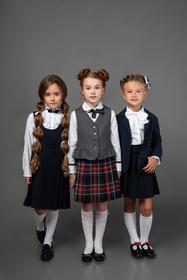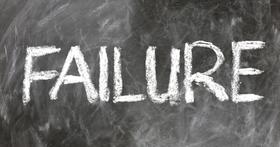Top Rankings
School City Of Mishawaka School District ranks among the top 20% of public school district in Indiana for:
Category
Attribute
Community Size
Largest student body (number of students) (Top 1%)
For the 2025-26 school year, there are 2 public high schools serving 1,481 students in School City Of Mishawaka School District. This district's average high testing ranking is 3/10, which is in the bottom 50% of public high schools in Indiana.
Public High Schools in School City Of Mishawaka School District have an average math proficiency score of 20% (versus the Indiana public high school average of 29%), and reading proficiency score of 38% (versus the 46% statewide average).
Public High School in School City Of Mishawaka School District have a Graduation Rate of 86%, which is less than the Indiana average of 89%.
The school with highest graduation rate is Mishawaka High School, with 86% graduation rate. Read more about public school graduation rate statistics in Indiana or national school graduation rate statistics.
Minority enrollment is 33% of the student body (majority Black), which is less than the Indiana public high school average of 36% (majority Hispanic and Black).
Overview
This School District
This State (IN)
# Schools
10 Schools
485 Schools
# Students
5,034 Students
360,958 Students
# Teachers
334 Teachers
23,272 Teachers
Student-Teacher Ratio
15:1
15:1
Student By Grade
District Rank
School City Of Mishawaka School District, which is ranked within the bottom 50% of all 389 school districts in Indiana (based off of combined math and reading proficiency testing data) for the 2022-2023 school year.
The school district's graduation rate of 86% has decreased from 94% over five school years.
Overall District Rank
#289 out of 395 school districts
(Bottom 50%)
(Bottom 50%)
Math Test Scores (% Proficient)
27%
39%
Reading/Language Arts Test Scores (% Proficient)
29%
41%
Science Test Scores (% Proficient)
20%
34%
Graduation Rate
86%
88%
Students by Ethnicity:
Diversity Score
0.56
0.56
% American Indian
n/a
n/a
% Asian
1%
3%
% Hispanic
10%
14%
% Black
14%
14%
% White
63%
64%
% Hawaiian
n/a
n/a
% Two or more races
12%
5%
All Ethnic Groups
District Revenue and Spending
The revenue/student of $11,515 in this school district is less than the state median of $13,184. The school district revenue/student has stayed relatively flat over four school years.
The school district's spending/student of $11,424 is less than the state median of $12,815. The school district spending/student has stayed relatively flat over four school years.
Total Revenue
$58 MM
$13,615 MM
Spending
$58 MM
$13,234 MM
Revenue / Student
$11,515
$13,184
Spending / Student
$11,424
$12,815
Best School City Of Mishawaka School District Public High Schools (2025-26)
School
(Math and Reading Proficiency)
(Math and Reading Proficiency)
Location
Quick Facts
Rank: #11.
Oaklawn Campus Program
Special Education School
(Math: <50% | Reading: 11-19%)
Rank:
Rank:
4/
Bottom 50%10
1411 Lincolnway West
Mishawaka, IN 46544
(574) 259-5666
Mishawaka, IN 46544
(574) 259-5666
Gr: K-12 | 44 students Student-teacher ratio: 15:1 Minority enrollment: 32%
Rank: #22.
Mishawaka High School
(Math: 19% | Reading: 40%)
Rank:
Rank:
3/
Bottom 50%10
1202 Lincolnway E
Mishawaka, IN 46544
(574) 254-7300
Mishawaka, IN 46544
(574) 254-7300
Gr: 9-12 | 1,437 student Student-teacher ratio: 15:1 Minority enrollment: 33%
Recent Articles

School Vouchers: Updated Pros and Cons (2025 Review)
Comprehensive 2025 analysis of school vouchers, weighing benefits and challenges for families, funding, outcomes, and policy directions.

Benefits and Drawbacks of Homework in 2025
Explore updated 2025 insights on homework’s benefits, drawbacks, mental health impact, best practices, and policy trends in U.S. public schools.

Charter Schools vs Public Schools 2025: Key Differences & Trends
Explore updated 2025 insights comparing charter schools vs public schools, enrollment, academic outcomes, funding, and real-world examples for families and educators.





